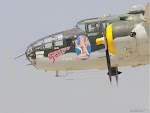Some photos of my Apollo 17 paper model that I never got around to posting:
Apollo 17 (December 7–19, 1972) was the final mission of NASA's Apollo program, the most recent time humans have set foot on the Moon or traveled beyond low Earth orbit. Commander Gene Cernan and Lunar Module Pilot Harrison Schmitt walked on the Moon, while Command Module Pilot Ronald Evans orbited above. Schmitt was the only professional geologist to land on the Moon.
The mission broke several records for crewed spaceflight, including the longest crewed lunar landing mission (12 days, 14 hours), greatest distance from a spacecraft during an extravehicular activity of any type (7.6 kilometers or 4.7 miles), longest total duration of lunar-surface extravehicular activities (22 hours, 4 minutes), largest lunar-sample return (approximately 115 kg or 254 lb), longest time in lunar orbit (6 days, 4 hours), and greatest number of lunar orbits (75). (Source: Wikipedia)
The Apollo Command Module (CM) kit, designed Ken L West, has over 2,400 parts on 127 PDF pages. The 37 pages of assembly diagrams and text are very thorough. The kit includes a full interior and is designed to be separated into several sections for display. I built the kit over six or seven months, and I found it challenging for several reasons: the amount of detail, the close tolerances between subassemblies, and simply the size of the beast. The hatch, alone, is a complex and beautifully detailed model. Overall, kit was certainly worth the considerable effort it required. I lit the interior with four micro-LEDs powered by a 9-volt battery hidden in the SM.
Above: The CM as built by Billy Leliveld, showing the open display option'
Below: My build of the main hatch
To build the Service Module (SM), I started with a digital paper model in 1:48 scale and scaled up the parts to 1:12 scale. That provided a good "blueprint" even though I had to redraw much of it due to pixilation. Scott Sullivan's illustrated book, Virtual Apollo was an invaluable resource. I chose the SM from Apollo 17 because of its interesting open instrument bay, which I built partly from scratch.

























